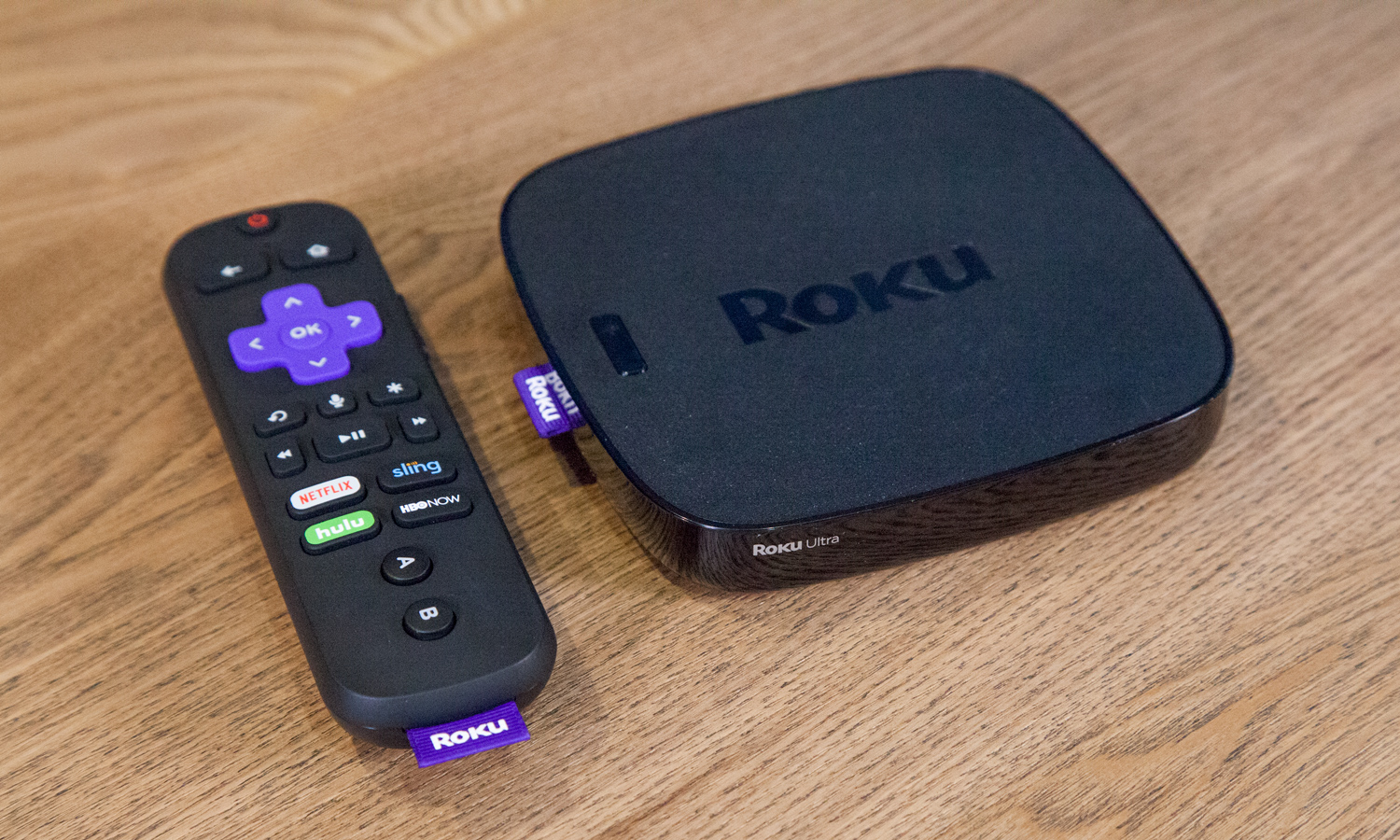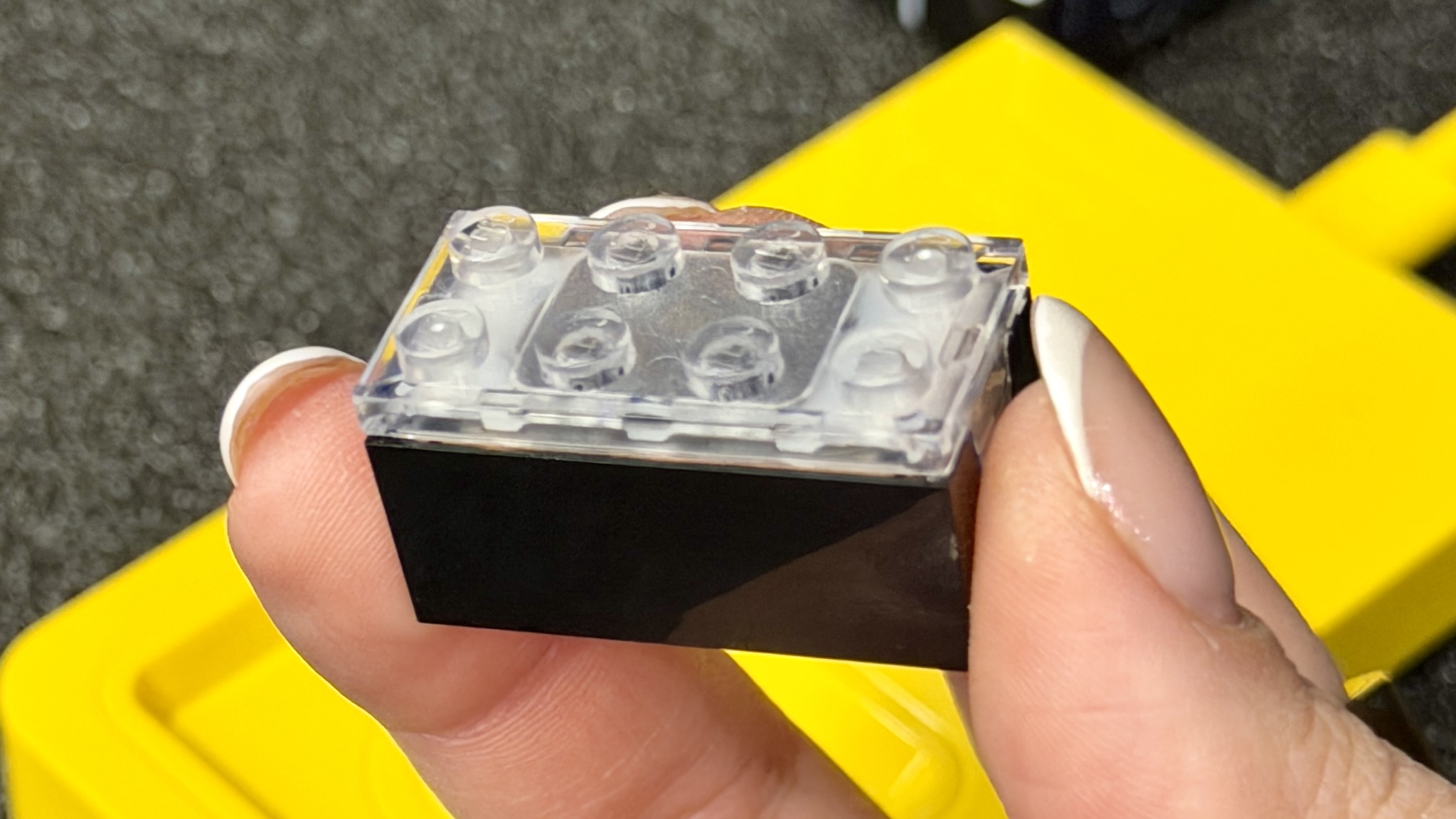Tom's Guide Verdict
The Roku Ultra (2017) is an excellent value, especially if you can live with run-of-the-mill audio, but it's similar to last year's model.
Pros
- +
Incredible app selection
- +
Improved remote
- +
Easy to watch your own content
- +
Full 4K HDR functionality
Cons
- -
No optical audio port
- -
Search and interface haven't advanced much
Why you can trust Tom's Guide
Before you read the review of the Roku Ultra's (2017) iteration ($100), humor me for a minute. Check out our review of last year's Roku Ultra. Hearken to the tale of a powerful media-streaming box with a high price, but almost no drawbacks; an unassuming, quiet device that houses almost every piece of streaming content you could want, complete with a ton of handy ports and a remote that's only a little less useful than it could be.
Now imagine the exact same box — at a lower price, with a slightly better remote and without one important audio port. That's the Roku Ultra (2017) in a nutshell. Last year's model was a nearly perfect streaming box, and there wasn't much to improve, so any change was likely to be in a lateral direction. The new Roku Ultra is an excellent value, but if you already have a comparable player, there's no real reason to upgrade.
Design
Like its predecessor, the Roku Ultra (2017) is a 5-inch square black box that says "Roku" on top. The system's only other adornment is a black button that can help you find your remote. (The remote control used to make a Star Trek noise when lost; now it plays Verdi's "Anvil Chorus." It's a wash.) The Ultra runs almost silently, which, again, is a pleasant upgrade after the noisy Roku 4.
It's not until you turn the device around that you notice a big missing piece. The Roku Ultra (2016) was one of the few streaming boxes on the market to feature an optical audio port, which was a huge boon to audiophiles who wanted to hook their Rokus up to external speakers and get the best sound possible. Not only has the 2017 version removed the audio port, but it hasn't used the space for anything else.
MORE: Best Streaming Players
The HDMI port and the microSD port are still crammed together, making it a real struggle to load a microSD card. There's also an Ethernet port and a power port on the back, with a USB port off to the side. (Why the microSD port could not have gone here as well, I don't know.)
I asked Roku representatives why the company removed the optical audio port, and they replied that not many customers were using it. While that's probably true, it can't help but make the device feel a little kneecapped compared to last year's model, and a much less attractive prospect for anyone with a fancy audio setup.
Get instant access to breaking news, the hottest reviews, great deals and helpful tips.
Interface
One area where Roku remains almost uncontested is in its interface. Operating the Roku Ultra could not be simpler; just visit the Channel Store, download whatever apps you want, organize them on your home screen, and click to open them. Your apps appear in rows of attractive squares on your home screen, and you can download as many as you want.

However, Roku doesn't offer the option to arrange apps into folders, so if you have a few dozen channels you like watching, you're going to have to organize them very well, one at a time. This is disappointing because Apple TV, Roku's only real competitor in the interface category, began offering this functionality years ago.
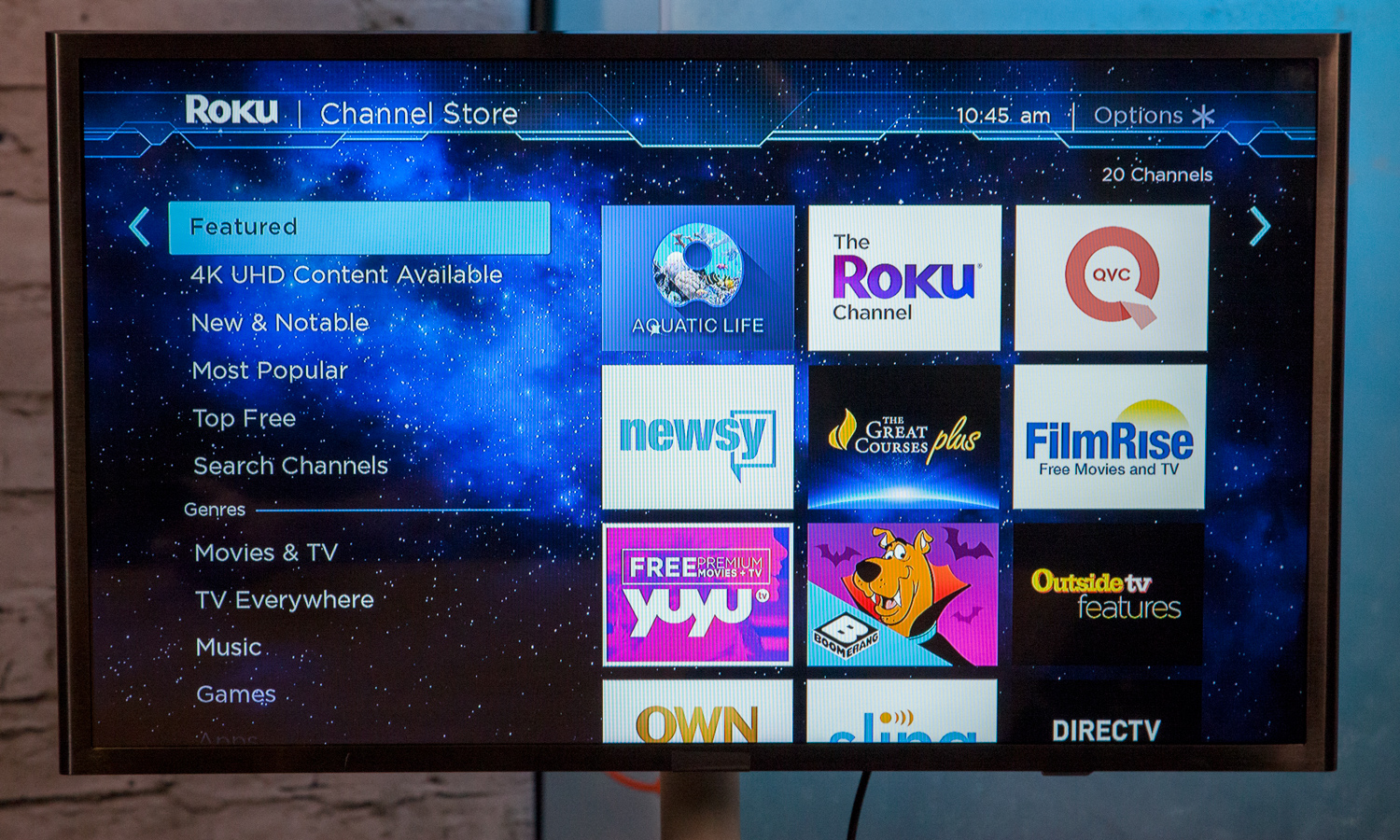
There are no hidden menus-upon-menus like on the Nvidia Shield TV, or favored apps that blot out the competition, like on the Amazon Fire TV. Unless you want to fiddle around in the settings menu, the time between you and your content will rarely exceed 10 or 15 seconds.
One area where Roku remains almost uncontested is in its interface.
True, the home screen also gives you options for My Feed (where you can monitor movies and TV shows for price drops), FandangoNOW TV and movies (Roku's proprietary store), and News (which gathers top stories from an AOL service — and which in my experience, didn't work at all). However, you'll rarely, if ever, use any of these options; indeed, the system settings gives you the option to hide some of them.
Search
The Roku's search is unparalleled in its breadth, trawling more than 100 services to find the exact movie, TV show, actor or director you're looking for. The voice search still has some trouble parsing names (I don't know who "Shaniqua Martin-Green" is, but she's definitely not the person starring in Star Trek: Discovery), but on the whole, you can find what you're looking for, whether you type it or say it. The search engine will also help you compare prices (and whether it's included in a subscription) across multiple services, which is just about the most helpful comparison this side of JustWatch.

However, while Roku has made great strides in increasing the number of services it searches, it doesn't understand natural language the same way Siri does on the Apple TV. You can ask Roku to find "Will Ferrell comedies" or "show me TV shows with Peter Capaldi," but if you ask it for 2016 Oscar winners, or "good" or "bad" films (as determined by Rotten Tomatoes), or even 4K HDR titles, it will get confused very quickly.
The Roku's search is unparalleled in its breadth, trawling more than 100 services to find the exact movie, TV show, actor or director you're looking for.
Personally, I think Roku's search is still better than Apple TV's by virtue of the sheer number of services it covers. But that gap is rapidly closing, and Roku's search functionality is no longer as untouchable as it once was.
Remote
One area where Roku has been making consistent improvements over the last few years is in its remote control. Just a few years ago, Roku remotes were ugly, bulky fingerprint magnets; now, they're sleek, matte devices with a comfortable assortment of useful buttons.
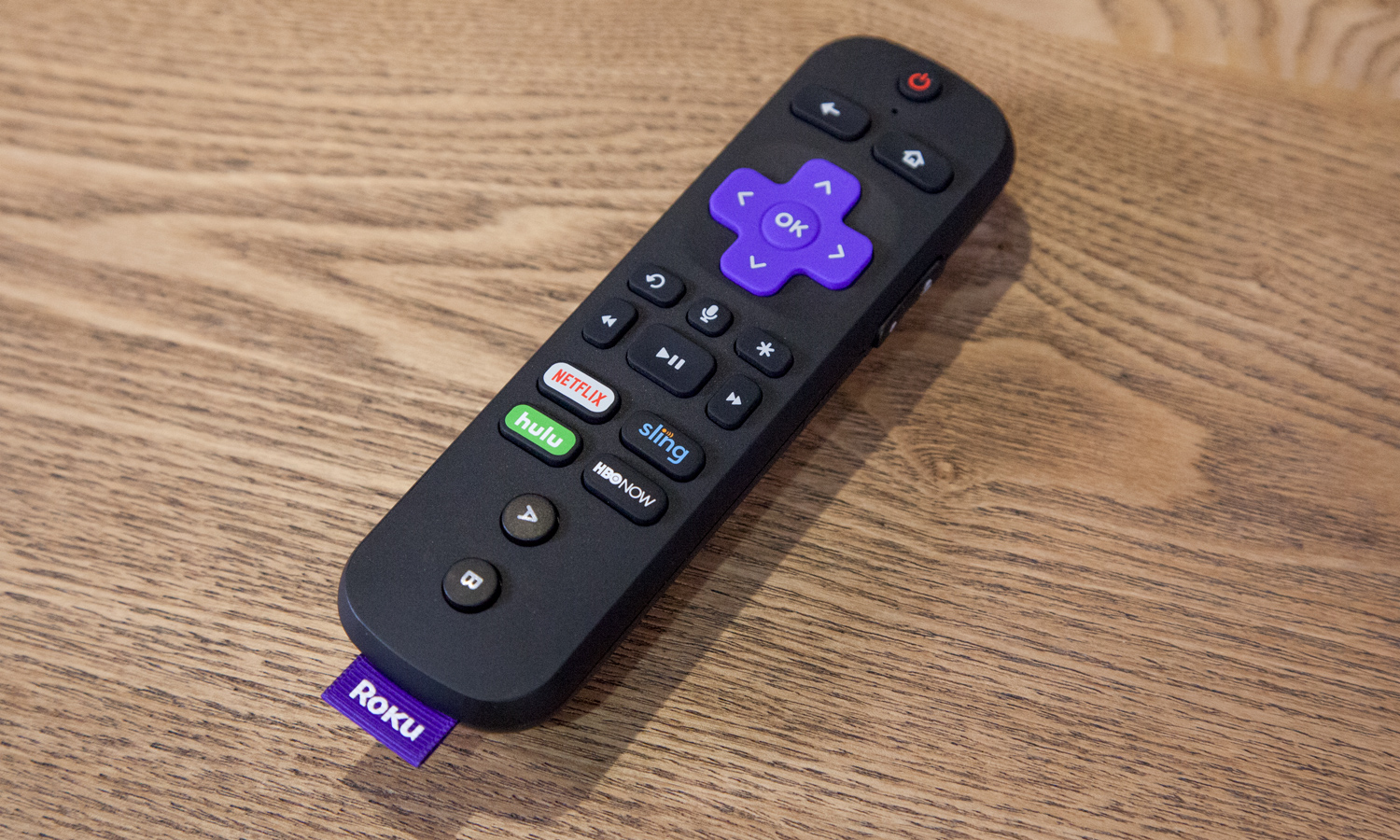
At first glance, the remote seems pretty familiar. It's got all the same buttons as its predecessor: home back, D-pad, confirmation, return, voice search, options, rewind, play/pause and fast-forward are all necessary. There's an audio jack, so you can plug in a pair of headphones and listen to your content all alone. (The headphones included with the Ultra aren't very good, but, hey, at least they're something.) However, it also has dedicated buttons to launch Netflix, Hulu, Sling and HBO Now — extremely useful if these are your favorite services, but deadweight if you prefer to get your media elsewhere. There are also A and B buttons, but given Roku's anemic gaming section, they're wholly unnecessary.
The Roku remote has gone from a useful accessory to a potential centerpiece for your whole entertainment center.
Even so, the Roku Ultra (2017)'s remote is the best peripheral Roku has put out yet. That's because of three new or improved buttons: a power button and a volume rocker. The power button can turn your TV on and off; the volume rockers can control your TV volume. On previous remotes, the volume rockers worked only during private listening, making their utility fairly limited. These three small additions turn the Roku remote from a useful accessory into a potential centerpiece for your whole entertainment center.
Content and Apps
Roku has always had one thing going for it above all other platforms: the sheer variety of stuff available. With more than 5,000 apps available, the only major streaming platform without a Roku channel is iTunes — and fat chance we'll ever see that outside of an Apple product, anyway.
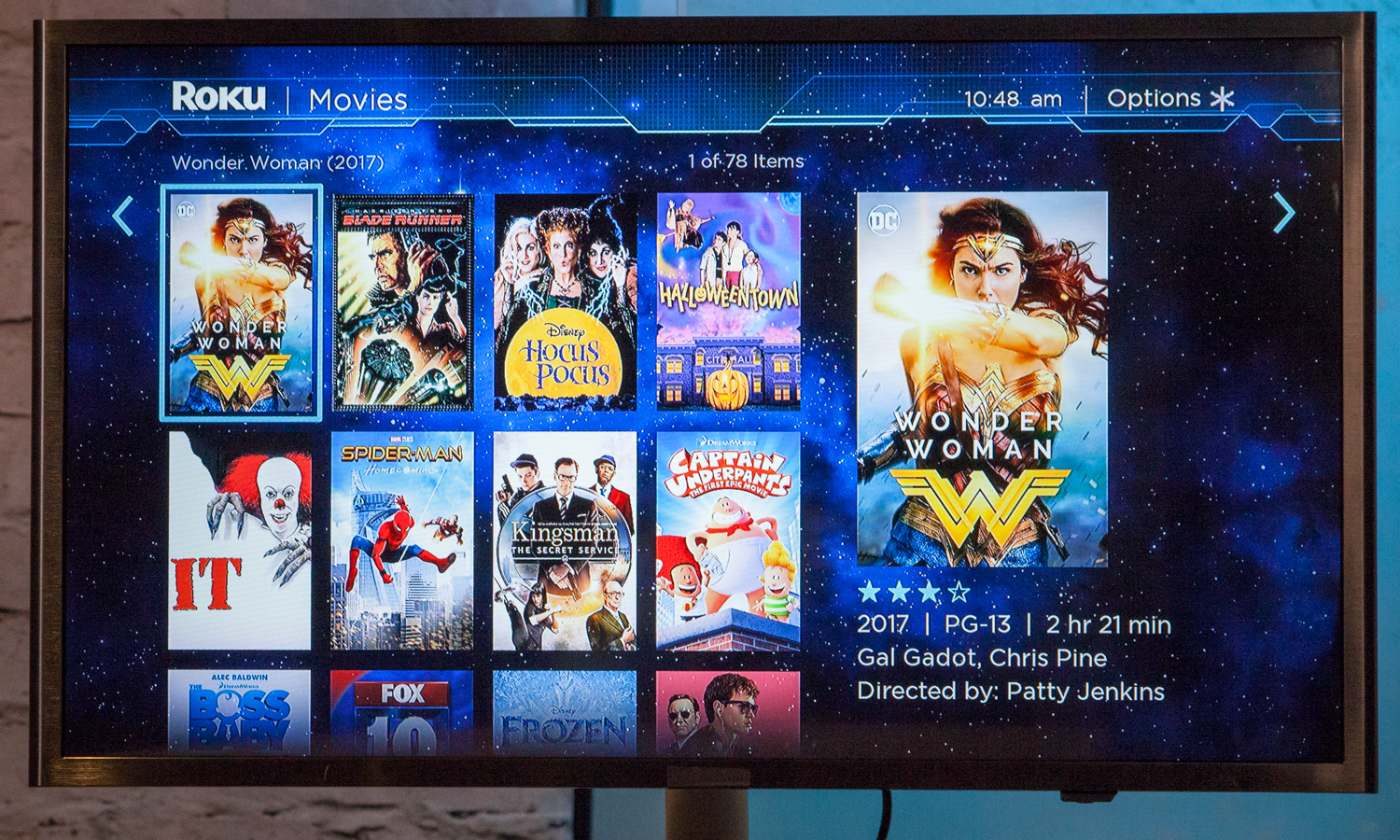
Naturally, there's a lot more chaff than wheat, but there's not a single important app I couldn't find. Netflix, Hulu, Amazon Video, Sling TV, PlayStation Vue, Google Play Movies and TV, Spotify, Pandora, iHeartRadio, YouTube and CBS All Access are present and accounted for, as are individual apps for just about every TV network that offers one.
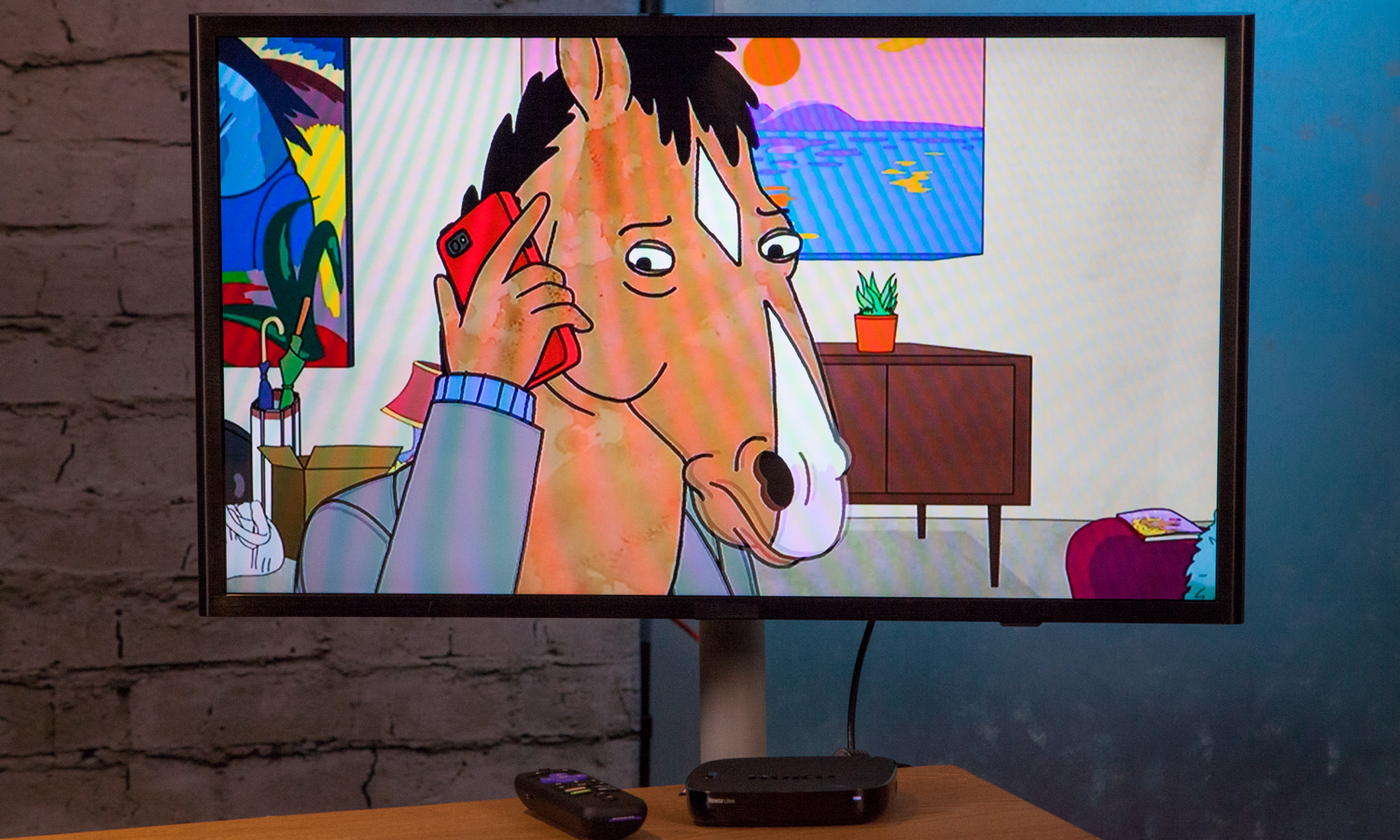
Roku also has more 4K-compatible channels than any of its competitors — although that's not necessarily saying much. With about 20 4K HDR apps available, there aren't many more now than there were last year, and it seems like the industry is going to take a while to catch up with top-tier video technology.
Naturally, having microSD and USB ports makes watching your own content a cinch. The only caveat is that Roku requires microSD cards to be formatted in a Roku-compatible paradigm first, so you'll have to jimmy it in, format it, jimmy it out, fill it up with stuff, and jimmy it in once again. It's less convenient than it could be.
Performance
The guts of the Roku Ultra seem pretty similar to those of its predecessor; as such, navigation is lightning-fast, and buffering can be extremely fast, depending on your connection. With an Ethernet connection, I saw 4K HDR content stabilize within 10 seconds — on some apps. Others took a minute or more.
MORE: The Best Streaming Video Services for Cord Cutters
There are too many factors that go into 4K HDR buffering to say how much is attributable to the Roku Ultra, how much to the app and how much to the broadband connection. At the very least, the Roku Ultra has the capacity to buffer content very fast, and usually does.
Roku Ultra vs. the competition
The Roku Ultra is entering a crowded playing field. Not only are there streaming devices from other manufacturers, but Roku has recently put out four other players, which vary in both power and price.
First and foremost, the Roku Ultra is a 4K HDR player, so its only fair comparison is against other 4K HDR players. If you still have a 1080p TV, there's no reason to pay this much for a streaming player.

The Apple TV 4K ($180) has an interface to rival Roku's, as well as an intricate search powered by Siri technology. It's also the only device to offer an iTunes app. However, the device is extremely expensive, and its remote is imprecise and unintuitive.
The Google Chromecast Ultra ($80) is one of the cheapest 4K HDR streamers on the market right now, and its extremely streamlined interface requires only a smartphone, tablet or computer that you already own. It's missing a few big channels (like Amazon Video), though, and its dongle form factor is at odds with its enormous power supply.
MORE: Our Favorite Streaming Media Players and Sticks
Amazon's new Fire TV ($70) has not yet come out, so no comparison is possible. However, it will offer 4K HDR display and put Amazon Prime content front and center. If you're heavily invested in that ecosystem, it may be worth holding off until we can put it and the Roku head-to-head.
The biggest competition to the Roku Ultra may come from another Roku device: the Streaming Stick+. The Stick+ costs only $70, and offers 4K HDR display, like the Ultra, in addition to an attachment that helps extend its wireless range. There's no microSD or USB slot, though, making it harder to watch your own content.
Bottom Line
Aside from losing the optical audio port, there's nothing that makes the Roku Ultra (2017) weaker than last year's model — but there's nothing that really makes it much stronger, either. The revamped remote is convenient, but the hardware is just about the same. The search options and interface are still top-tier, but other companies have made considerable strides in the past year. The Roku Ultra is still the king of streaming devices, in this writer's opinion, but its crown is now contested.
Still, none of that should detract from the Roku Ultra's utility. Roku wants the Ultra (2017) to be the most comprehensive streaming box available on the market, and it is. You can get almost any kind of streaming content you can imagine, and you can get it without having to wade through a single extraneous menu. I can think of no higher recommendation than that.
If you're looking to upgrade your streaming box, you may still want to wait and see how Amazon's new Fire TV shakes out. Otherwise, the Roku Ultra is about as good as it gets — even if the distance between it and its competitors is no longer as great as it once was.
Credit: Shaun Lucas/Tom's Guide

Marshall Honorof was a senior editor for Tom's Guide, overseeing the site's coverage of gaming hardware and software. He comes from a science writing background, having studied paleomammalogy, biological anthropology, and the history of science and technology. After hours, you can find him practicing taekwondo or doing deep dives on classic sci-fi.
-
art0cohen Thanks for the excellent review. I returned my 2016 model Roku Ultra in anticipation of purchasing the 2017 model. Your review is very helpful.Reply
It seems to me that the removal of the optical audio port on the Ultra is not a significant loss if the TV has an optical audio port. In fact, it makes more sense to take the audio from the TV than the Roku player, since the TV may have multiple sources of programming, such as an antenna and a DVD player. Otherwise, the audio would have to be taken from each source of programming, and the audio receiver or amplifier may have only a single optical audio input.
Pre-release reports indicated that the new Roku players would be able to manage and search over-the-air broadcasts as well programs streamed from the Internet. However, the new players do not appear to have coaxial inputs. Does that functionality exist, or is it necessary to connect a separate RF (radio frequency) tuner connected via the USB port?
Art
